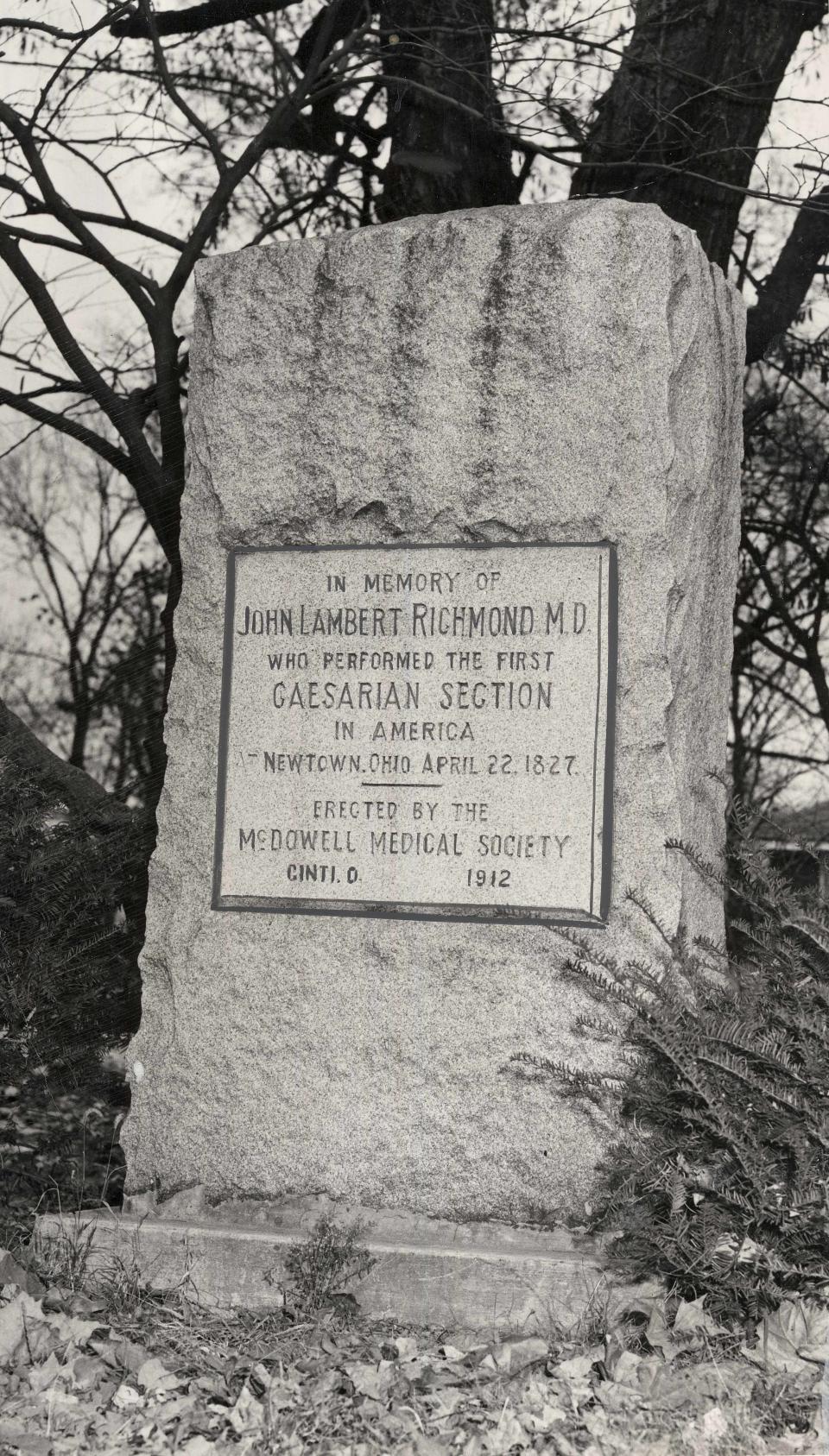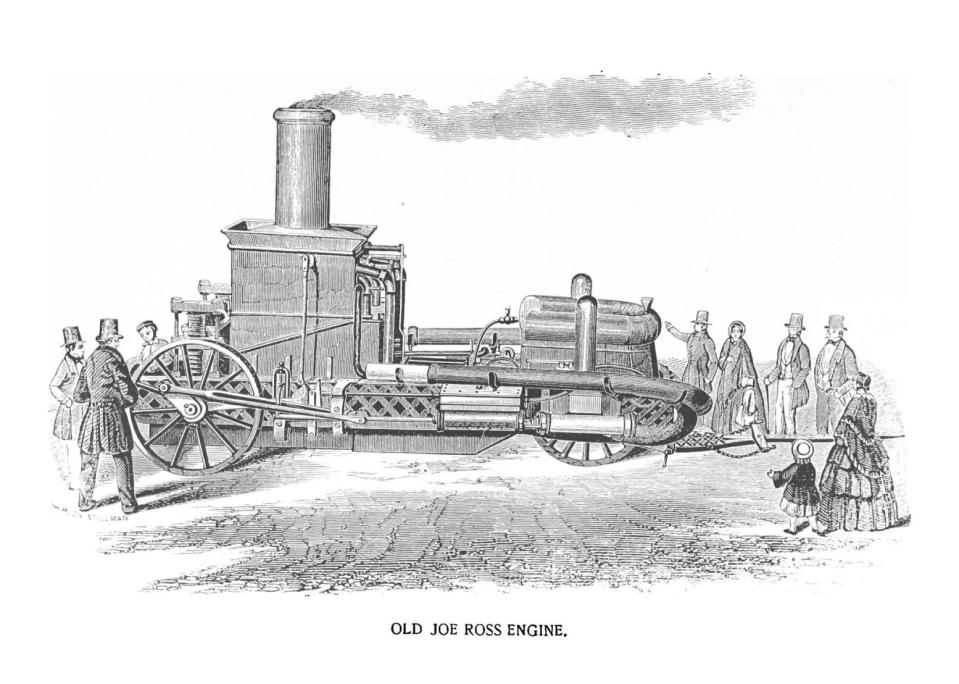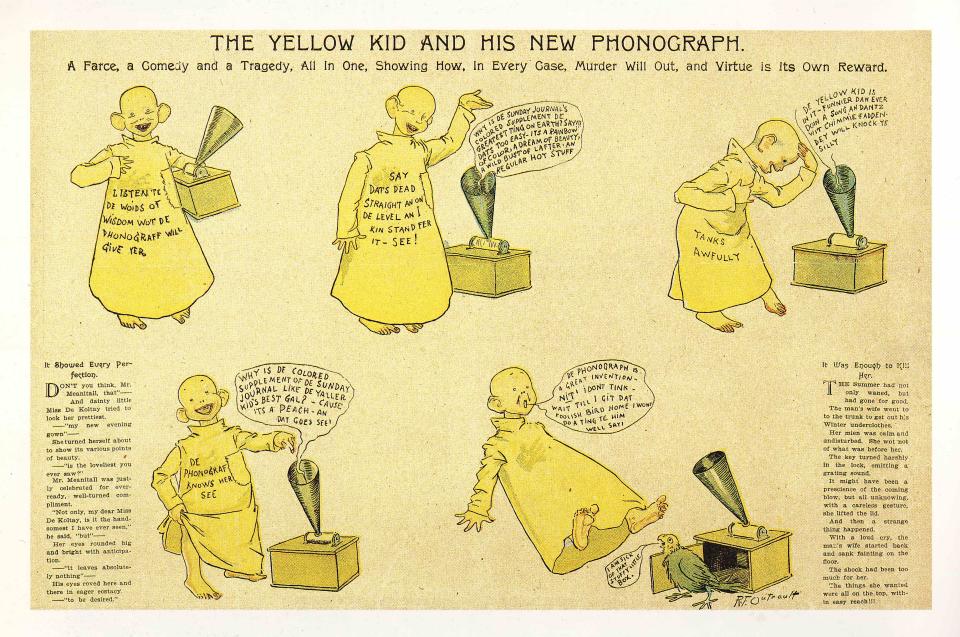Why America's first reported C-section took place in this Cincinnati village
- Oops!Something went wrong.Please try again later.
- Oops!Something went wrong.Please try again later.
- Oops!Something went wrong.Please try again later.
Cincinnati and Cincinnatians have been responsible for a number of firsts in history.
As every Reds fan knows, the 1869 Cincinnati Red Stockings were the first openly professional baseball team, paying all their players. The first man on the moon, Neil Armstrong, spent his last 40 years after the moon landing as a Cincinnati-area resident. Not to mention inventions, from Ivory soap to Uno, started in the Queen City.
Cincinnati can also boast the first night baseball game in 1935, graduating the first female rabbi, Sally Priesand, in 1972, and Rookwood Pottery, started in 1880 by Maria Longworth Nichols Storer, the first large manufacturing company founded and owned by a woman in the U.S. All of which have gotten plenty of ink over the years.
But some of Cincinnati’s other historic firsts aren’t as well celebrated, or are a little complicated. Here are three deserving of the spotlight.
America's first reported cesarean section was performed in Newtown
Newtown’s Dr. John Lambert Richmond performed the first reported cesarean section in America on April 22, 1827. A granite monument was placed on Church Street in Newtown, the village where the procedure took place, in 1912 to honor the accomplishment.
On that stormy night, Richmond, who doubled as a Baptist minister, was called to help Miss E.C., a free Black woman, who had been in distressed labor for 30 hours. The Little Miami River was high, so Richmond had to row a skiff across to reach her. The log cabin had a dirt floor, and midwives held blankets up to keep the wind from blowing out the candles.

Richmond gave her laudanum and sulphuric ether to mitigate her convulsions. He felt she would die if he didn’t do a cesarean section. The procedure had been performed in Europe, but not yet in America, and was only considered in desperation.
“Feeling a deep and solemn sense of my responsibility, with only a case of common pocket instruments, about one o’clock at night, I commenced the Caesarean Section,” Richmond wrote in “The Western Journal of Medical and Physical Sciences,” published by Dr. Daniel Drake in 1830.
The patient had an abnormally shallow vagina and the baby was large. Deciding that “a childless mother was better than a motherless child,” he did what he could to save the mother. The child did not survive, but the mother recovered and returned to work 24 days later.
Richmond’s first-person account was the first one published about a C-section operation in a medical journal in America, giving him credit over other claims. Reports of an earlier cesarean operation performed by Dr. Jesse Bennett of Mason County, Virginia, upon his wife, Elizabeth, on Jan. 14, 1794, were not published until nearly a century later in 1892, 50 years after Bennett’s death, and many historians question that claim.
First practical steam-powered fire engine and first paid fire department
This is a twofer, and it started with a fire. Miles Greenwood, co-founder of the Ohio Mechanics Institute, owned and operated the Eagle Iron Works foundry at Walnut and Canal streets that suffered a disastrous fire in 1852. Though he rebuilt it, the fire prompted Greenwood, who had also been president of the Cincinnati Volunteer Fire Assoc., to help reform the fire department.
Greenwood championed the first practical steam-powered fire engine built by A.B. Latta and Abel Shawk. It was primitive, a square fire-box, like a locomotive boiler, with a furnace and chimney attached to coils of tubes. There had been an earlier steam fire engine in New York, but it was difficult to move and impractical. Cincinnati’s engine was on wheels, pulled by a team of four horses, and could build up enough steam pressure in 5 to 10 minutes to power the hoses, so the water would be ready just about when the firefighters arrived on the scene.
That first engine, dubbed “Uncle Joe Ross” after the city councilman who persuaded the city to purchase the engine, was put into operation on Jan. 1, 1853. Greenwood was made the first fire chief and was in command the first time it was used to fight a fire.

At that time, fire departments were volunteer groups that would compete for who got paid by the insurance companies. Many of the volunteers were not happy about the steam engine, and Greenwood had to pay someone to drive the horses.
The change to the first paid fire department was his doing, according to “History of the Cincinnati Fire Department,” published in 1895.
“The pay fire department, now in general use, is really his creation. From being a leading spirit in the old volunteer department, he saw the inevitably demoralizing tendencies of it upon the youth of cities, and conceiving the idea of adopting steam as a motive power in the extinguishing of fires, he next determined to have a paid, rather than a volunteer department. Eventually he triumphed over every difficulty, and to-day such a thing as a volunteer department is unknown in any city in America.”
(Local historian Greg Hand uncovered the historical footnote that the “Uncle Joe Ross” engine exploded on Dec. 5, 1855. The fault was “a deficiency of water in the fire-box,” the Cincinnati Gazette reported, killing engineer John Winterbottom. But the steam fire engine remained the standard for fire departments for 65 years.)
Former Art Academy of Cincinnati student created first comic strip
Richard F. Outcault was the first superstar cartoonist. Born in Lancaster, Ohio, in 1863, he studied art at the McMicken School of Design, which became the Art Academy of Cincinnati, graduating in 1881. His early work, including a stint at The Enquirer, caught the eye of inventor Thomas Edison, who hired Outcault to do mechanical drawings and illustrations.
Outcault then found work drawing cartoons for the New York World, owned by Joseph Pulitzer. His 1895 cartoon “Hogan’s Alley,” depicting street urchins in an Irish tenement slum, introduced a bald-headed boy in a yellow kid’s dress who became known as the Yellow Kid. The character was enormously successful, spawning merchandise from bubblegum cards to tobacco tins – and helped start a newspaper war.
The comics pages were enormous draws for newspapers in those days. Cartoons were printed large and in color, and appeared in only one paper, which became a major draw to that publication. When mogul William Randolph Hearst stole Outcault away for his rival newspaper, the New York Journal, Pulitzer had another artist continue “Hogan’s Alley,” so there were two versions of the Yellow Kid in papers for a time.

Outcault kept tinkering with the cartoon format, such as introducing word balloons. Comics at that time were mostly large one-panel cartoons with captions on the bottom – think of New Yorker cartoons. Comic historian Bill Blackbeard of the San Francisco Academy of Comic Art credited Outcault with the first comic strip as it came to be recognized. Outcault’s cartoon “The Yellow Kid and His New Phonograph,” published on Oct. 25, 1896, was the first to use all the hallmarks of a strip: multiple panels, word balloons and a recurring character. Within months, most cartoonists adopted these elements.
Surprisingly, despite the character’s fame, the Yellow Kid was around for only three years, 1895-1898. In 1902, Outcault created another enduring comic strip character, Buster Brown. In 1904, the Brown Shoe Co. licensed his characters Buster, Mary Jane and Tige the dog for advertising. You remember Buster Brown shoes and Mary Janes, don’t you?
Additional sources: “John Lambert Richmond, M.D.: ‘The First Caesarian Section in America’” by Dr. Arthur G. King; Cincinnati Curiosities blog; “The Age of Steam Fire Engines,” www.ffam.org; “R.F. Outcault’s the Yellow Kid: A Centennial Celebration of the Kid Who Started the Comics”; Stripper’s Guide blog; Wikipedia
This article originally appeared on Cincinnati Enquirer: When was America's first reported C-section? The story behind it

